Over 50? These 9 Swimming Mistakes Are Aging Your Body Faster (Here's How to Fix Them)
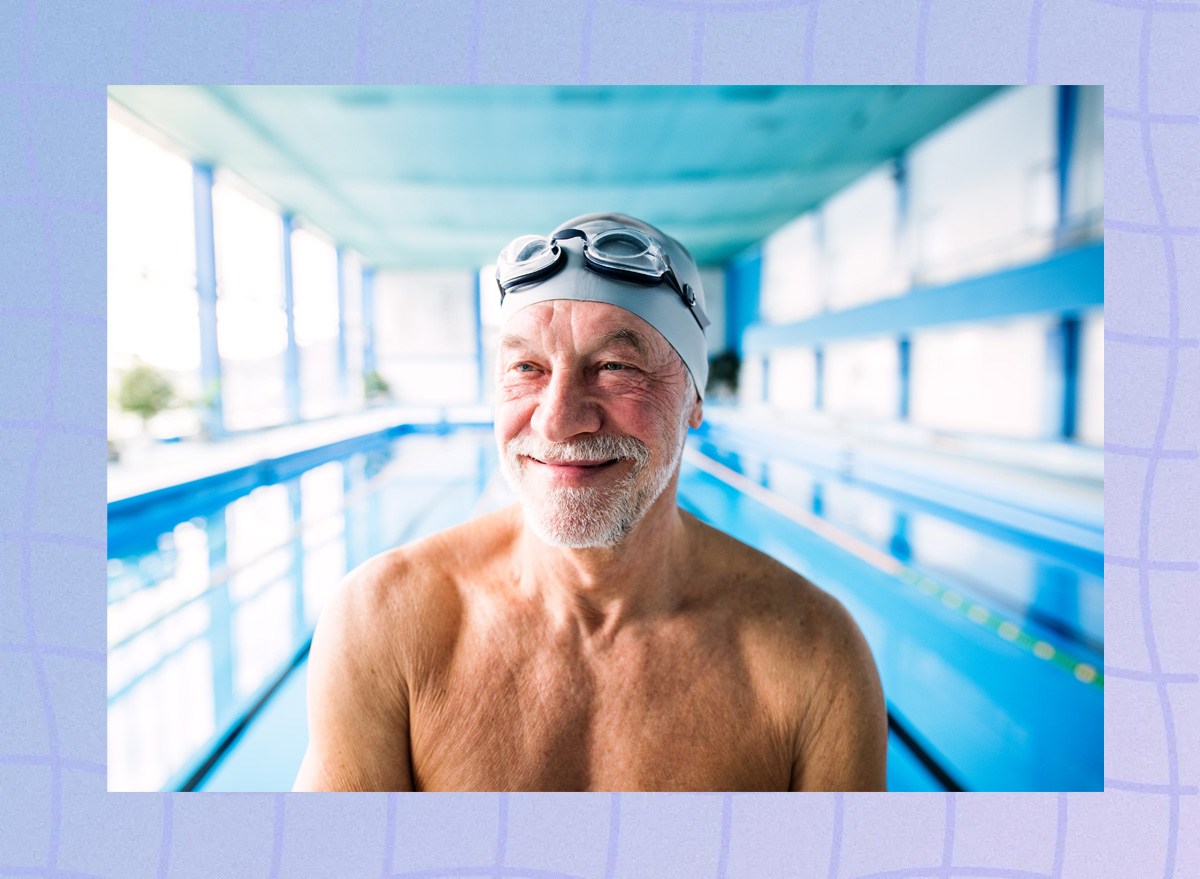
Like many of you, I found my passion in the water at a young age. As a competitive swimmer for 13 years, certified personal trainer, and swim instructor at PRO Club, I've dedicated my career to helping people of all ages embrace the power of swimming. Working primarily with adults in their 40s-50s who wanted to keep up with their children, decrease pain, and feel healthy and happy, I've witnessed firsthand how water can transform fitness routines. Whether you're fearful of water or a seasoned athlete, these common swimming mistakes could be holding you back from experiencing the full benefits of this low-impact, full-body workout. Here's how to fix them and protect your body for years to come.
1. Head Position: The Most Common Mistake
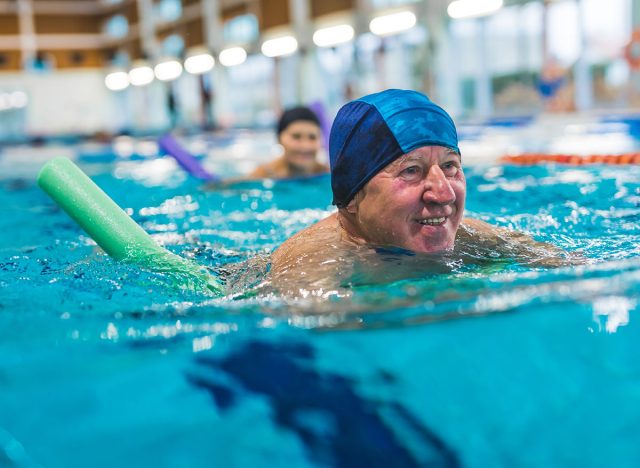
MISTAKE: Swimming with your head up is a natural instinct but causes body imbalance and unnecessary neck strain. Think of your spine as a plow through the water – looking forward creates pressure that can leave you tight and sore, or worse, in a compromising position.
FIX: Look down! Visualize tucking an apple under your chin or imagine flashlight beams from your eyes pointing at the pool bottom. Your goal is a neutral position for your neck – this will likely feel deeper than it is in reality, like you are swimming downhill.
2. Improper Breathing Head Position
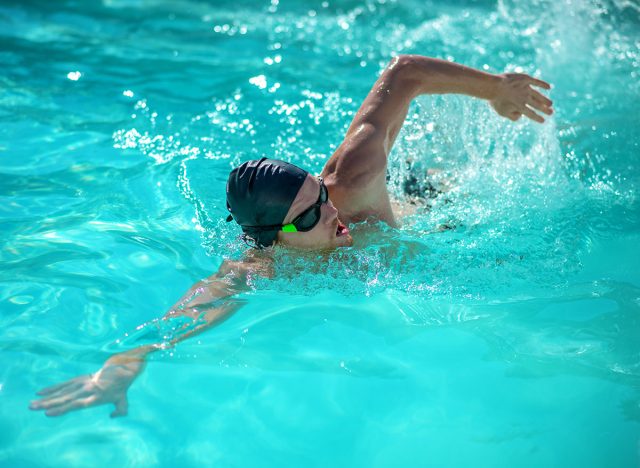
MISTAKE: Not only does your head position matter when you are facing down in the water, but it also matters when you come up for a breath. Lifting your head to breathe disrupts momentum and fluid motion, leading to desperate breathing and quick burnout.
FIX: The key to being in control of your breath is to rotate your body. Imagine you are a metal rod from the tip of your head to the tip of your toes – you cannot bend, only rotate, each time you need a breath. PRO TIP: Practice breathing on both sides every third stroke to keep muscles, spine, and body balanced, preventing injuries.
3. Holding Your Breath Underwater
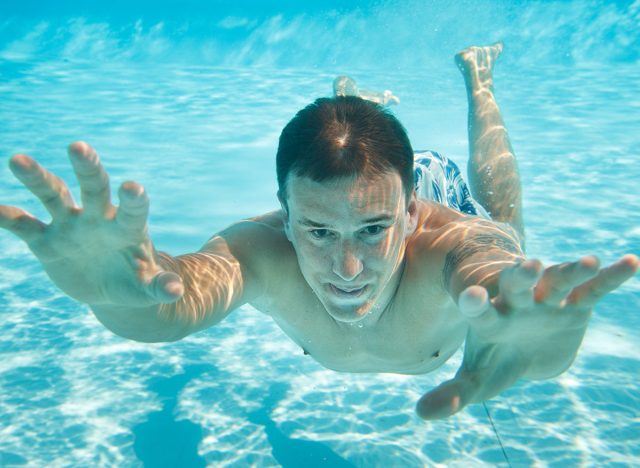
MISTAKE: With any other exercise on land, you have a pattern to breathe in and out, even during heightened effort. Holding your breath underwater can lead to oxygen deprivation and is dangerous, increasing the risk of drowning.
FIX: Continuously exhale underwater (ideally through your nose), which leaves you ready to inhale through your mouth when you break the surface for breath.
4. Swimming at One Speed
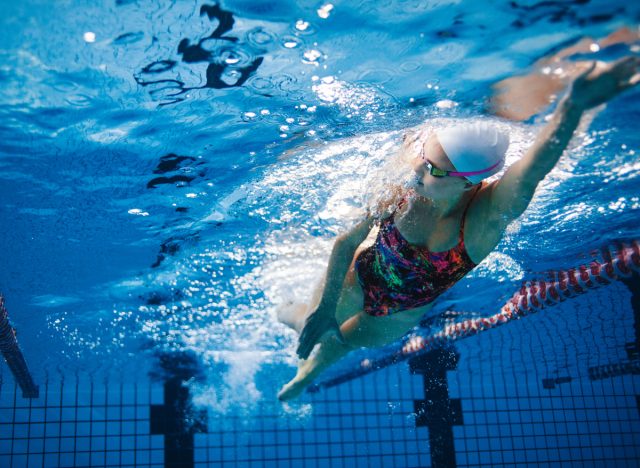
MISTAKE: Many swimmers are under the impression that you can only swim at one speed, leading to overexertion and unnecessary fatigue or lactic acid build up.
FIX: Just as you can run, jog, and walk on land, vary your swimming speeds. Sometimes simply telling yourself to slow down does the trick. Try the "catch-up drill" (waiting for one arm stroke to finish before starting the next, like playing "tag" with your hands) or counting 3 seconds between each stroke.
5. Swimming Flat Without Rotation
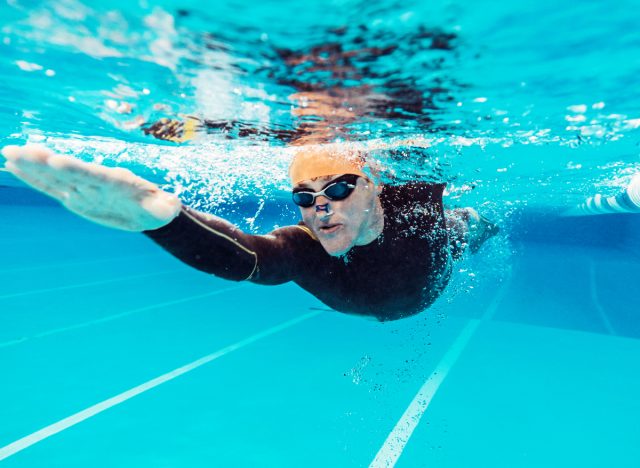
MISTAKE: The motion to pull your arm underwater, circle around, and come back over puts tremendous pressure on your shoulder, particularly the rotator cuff. This typically leads to swimmer's shoulder – inflammation and pain in your shoulder joint when lifting over your head or pulling against water.
FIX: Your body should rotate completely to the side with each stroke. Practice the "6 kicks per side" drill: Start on your side, kick 6 times, take a stroke and rotate fully to the other side for 6 kicks. This prevents your body from ever being completely flat.
6. Overreaching with Arm Strokes
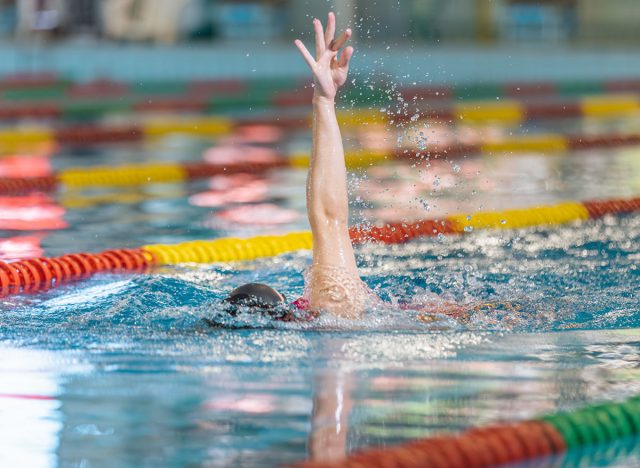
MISTAKE: Overreaching looks like a windmill – arms making straight, full, large circles above and below water. This pushes your body up and down, putting your shoulder in a vulnerable position when fully stretched out.
FIX: When your arms are above water, let them relax. Put the effort into your underwater pull, then let them softly rotate over to prepare for the next pull. Your hand should gently slip into the water like an airplane landing on a runway.
7. Kicking Too Hard
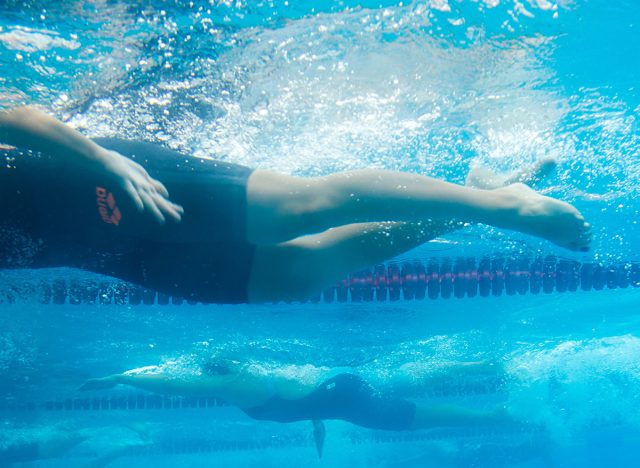
MISTAKE: Large kicks risk pulling on your back and hip to the point of strain. Kicking from the knees instead of the hip puts unnecessary tension on the joint with no benefit.
FIX: Use gentle movements with small range of motion. Think about a whip's motion – pressure starts at the top and follows through. Press down from your hip, then let it flow through to your ankle and toes.
PRO TIP: Keep your core tight to prevent back arching and increase kick strength.
PRO TIP: Stretch your ankles daily for better kick power – try pointing your toes while brushing your teeth!
8. Pulling Arms Straight Down
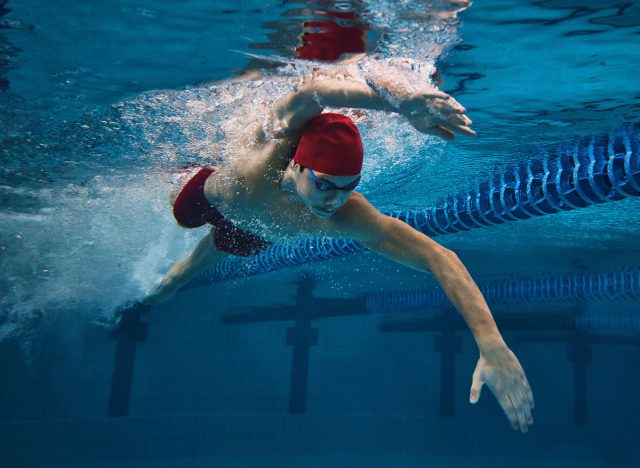
MISTAKE: Pulling straight down creates a bobbing stroke instead of a graceful forward glide, though it provides temporary relief for quick breaths.
FIX: Trace your thumb along your body during each pull. Imagine your hand is firmly planted on something solid in the water. Use pool lane lines as markers – watch where your hand enters and exits to minimize "slipping" during your pull.
9. Swimming Without a Plan
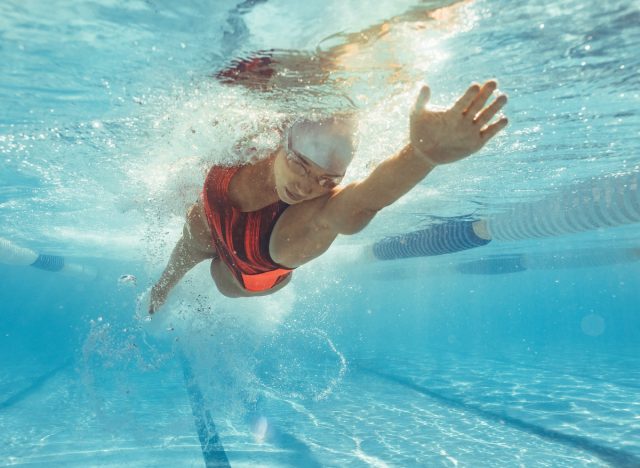
MISTAKE: Coming without a plan can lead to confusion or doing something you're not ready for, risking injury or ineffective workouts.
FIX: Create a structured routine with warm-up, workout sets, and cool-down stretches. Remember, age is just a number. Focus on balance and keeping it fun! Join a group, set goals, include variety, use music, watch videos, and keep moving your body in the water.
There is no doubt that swimming will improve your health as you age over 50. Repetitive movements, gentle resistance, and buoyancy all create an ideal environment for the body at any age, with limited injury risk. By removing obstacles, roadblocks, having knowledge/training, and creating a safe place to exercise, you can enjoy incredible benefits only offered in the water regardless of age or current health status. And if you enjoyed this article, don't miss How Long Your Walking Workout Should Be To Shrink Belly Fat.








